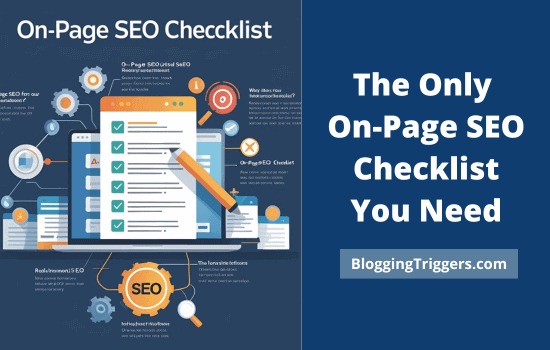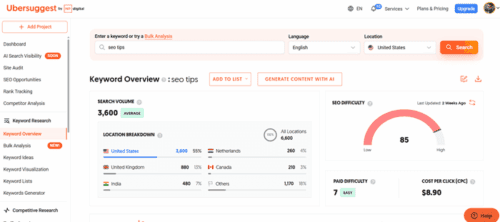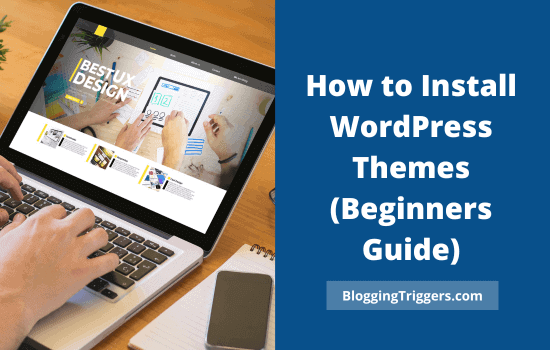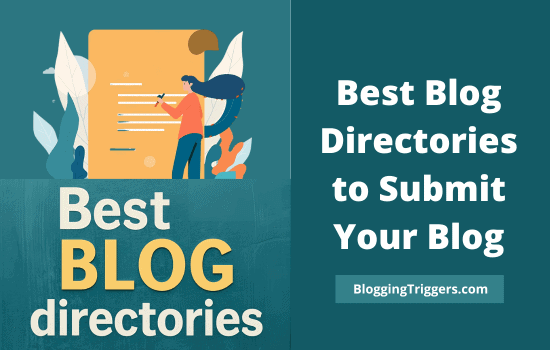
So, you’ve written a blog post. It’s helpful, detailed, and full of innovative concepts. But no one’s reading it.
Why?
That’s where on-page SEO comes in. Probably, you may have forgotten to optimize your content for search engines. How will Google rank your post without it? And how can you get organic traffic without ranking?
Search engines need a little help to understand what your post is about. A few simple tweaks can make a big difference.
This SEO checklist is made for beginners. No confusing terms. No guesswork. Just clear steps you can follow to give your blog a better chance to rank — and get noticed.
- What is On-Page SEO?
- On-Page SEO Checklist
- 1. Start with Keyword Research
- 2. Understand Search Intent
- 3. Craft a Clear, SEO-Friendly Title
- 4. Write a Compelling Meta Description
- 5. Use an SEO-Friendly URL Structure
- 6. Use Headings and Subheadings Wisely
- 7. Place Keywords Naturally
- 8. Add Internal and External Links
- 9. Add good visuals
- 10. Optimize Images with Alt Text
- 11. Write for Engagement and Readability
- 12. Mobile Optimization
- 13. Improve Page Speed and Core Web Vitals
- 14. Add an FAQ Section
- 15. Use Schema Markup
- 16. Update old blog posts
- 17. Proofreading
- FAQ
What is On-Page SEO?
On-page SEO means optimizing everything on your blog post to help it appear in search engines. It’s the stuff you control—like your title, headers, and how you use keywords.
Why does it matter?
Because Google wants to show the best, most relevant content, this checklist helps you become that content.
On-Page SEO Checklist
If you want your blog to rank well on Google, on-page SEO is a must. It’s all about how you build and shape your content so both readers and search engines can understand it.
You don’t need to be an expert. Just follow a few simple steps — and do them well. Here’s a quick list of what to focus on:
1. Start with Keyword Research
Before you start writing, perform a detailed keyword research. Detect low-competition keywords in your niche, Keyword Difficulty, CPC rate, monthly search volume, related keywords, questions, etc. Analyze search trends to find if the demand for your target keyword is increasing or decreasing.
Use free keyword research tools like:
- Ubersuggest
- Google Keyword Planner
- AnswerThePublic

Focus on long-tail keywords. For example, instead of “SEO tips”, go for “SEO tips for blogs” or “SEO tips for Pinterest”. They are more specific and easier to rank for.

Focus on keyword difficulty scores. Collect all matching keywords, questions, Google autocomplete suggestions, and comparisons matching your target keyword. You should address them in your content to rank for maximum keywords and improve search visibility.
2. Understand Search Intent
Google cares about giving people what they want. That’s called search intent.
Search intent is the reason behind a person’s search. It shows what they’re actually looking for when they type something into Google Search. Understanding the reason helps you create content that matches users’ needs.
Is the person looking for a how-to guide? A product review? or planning to buy a product?
Make sure your post matches their intent. If someone searches “best free SEO tools,” they expect a list of tools.
Types of Search Intent (with examples)
1. Informational
People want to learn something.
Example: “How to bake a cake”
They’re not ready to buy — they just need answers.
2. Navigational
They’re looking for a specific site or page.
Example: “Instagram login”
They already know where they want to go.
3. Transactional
They’re ready to buy or take action.
Example: “Buy running shoes online”
They’ve done the research and are ready to decide.
4. Commercial Investigation
They want to compare or learn more before buying.
Example: “Best laptops under 50,000”
They’re close to buying but still deciding.
If your blog post matches the search intent, it’s more likely to rank.
3. Craft a Clear, SEO-Friendly Title
Your title is the first thing people see in search results. Make it powerful and clickworthy. Use your primary keyword in the SEO title and keep it under 60 characters. Therefore, your title should be readily apparent in search results.
Add power words such as ultimate guide, full list, best apps, best tools in 2025, etc, in headings. This helps you get more user clicks from search engines and social media shares.
Examples:
- Best Free Blog Themes for Beginners
- The Only On-Page SEO Checklist You’ll Need in 2025
4. Write a Compelling Meta Description
Your meta description is the short text that shows up under your page title in search results. It gives people a quick idea of what your post is about.
Keep it clear, short, and to the point — around 150–160 characters. Use your main keyword and speak directly to the reader.
Think of it like a mini ad. The meta description won’t boost rankings much, but it can help more people click your link from SERPs.
5. Use an SEO-Friendly URL Structure
Short, simple, and keyword-rich URLs are best.
Use words that describe your post — no random numbers or symbols.
Add your main keyword if it fits naturally.
For example, use:
yourblog.com/seo-tips
Not:
yourblog.com/post?id=1234
Simple URLs look better, build trust, are memorable, and are easier to share.
6. Use Headings and Subheadings Wisely
Break your content into sections with clear H2 and H3 headings.
Headings break your content into clear sections. They help readers scan and find what they need fast.
Start with one H1 (your main title), then use H2s and H3s to organize your points.
Add your keywords where they fit, but don’t force them.
Good headings make your blog easier to read — for both people and search engines.
7. Place Keywords Naturally
Keywords help search engines understand your topic. But they should sound natural when you write.
Use them in your title, intro, headings, and a few times in the body. Don’t stuff them in. If it feels awkward, use similar keywords.
Your goal is to write for people first, then fine-tune for search. When it reads well and includes the right words, everyone wins.
Add your primary keyword throughout:
- First 100 words
- Headings and subheadings
- Image alt text
- Conclusion
But don’t overdo it. Keyword stuffing hurts your ranking.
Also, use LSI and semantic keywords—terms related to your main topic.
8. Add Internal and External Links
Link to other helpful posts on your blog. It helps Google understand your site structure and send visitors to other relevant pages. Internal linking is a great strategy to boost your traffic and reduce bounce rate.
Also, provide links to trusted sources for extra credibility. It guides search engines about your blog’s niche and content topic. Your post will be indexed accordingly.
9. Add good visuals
Good visuals make your blog stand out. A strong image can grab attention before a single word is read.
Use high-quality pictures that match your topic. If possible, design eye-catching images with a graphic design tool. It makes your visuals really unique.
Break up long text with images to keep readers interested. Charts, screenshots, and graphics also help explain things better.
A well-placed image can turn a plain post into something people remember — and share.
10. Optimize Images with Alt Text
Images make your blog more interesting. But search engines can’t “see” them — they read the alt text instead.
Alt text is a short description of what the image shows. It helps with SEO and makes your site more accessible.
Use clear, simple words. Include your keyword if it fits naturally.
- This small step can help your images show up in Google and bring more traffic to your blog.
Bonus tip: Compress images to make your blog load faster.
11. Write for Engagement and Readability
Your blog should be easy to read and fun to follow. Use short sentences. Break big chunks into smaller parts.
Write like you’re talking to a friend. Keep the tone clear and friendly.
Use bullet points, bold text, and space to guide the eye. These simple strategies keep readers on the page longer — and search engines notice that.
Ask questions. Include examples. Talk like a human.
If people enjoy reading your post, they’re more likely to stay, share, and come back. The longer people stay on your post, the better.
12. Mobile Optimization
Most people read blogs on their phones now. If your site isn’t mobile-friendly, they’ll leave fast to visit alternate pages.
Make sure your blog looks good and loads well on small screens. Text should be easy to read. Buttons should be easy to tap.
Test your site on different devices. Fix anything that feels slow or hard to use.
A smooth mobile experience keeps readers happy — and helps you rank better too.
13. Improve Page Speed and Core Web Vitals
Nobody likes a slow website. If your blog takes too long to load, visitors leave — and search engines notice.
Page speed matters. So does how your site feels when people use it. That’s where Core Web Vitals come in — things like how fast your page shows up, how stable it looks, and how quickly it reacts.
Compress images. Use fewer heavy plugins. Pick a fast theme. Use caching plugins. Choose a fast hosting provider.
The faster your site, the better the experience — and the better your chances of showing up in search.
14. Add an FAQ Section
An FAQ section answers common questions your readers may have. It helps them find quick answers without scrolling too much.
Use simple, clear questions — just like someone would type into Google. Then, give short, helpful answers. Visit Google Search, Semrush, or Answer The Public to collect FAQs in your target keywords.
The FAQ section can also boost your chances of showing up in search results with rich snippets. It’s a smart way to add value, keep readers on the page, and cover more keywords naturally
15. Use Schema Markup
Schema markup is extra code that helps search engines understand your content better. It tells them what your page is really about — whether it’s a blog post, recipe, review, or FAQ.
When done right, it can add rich features to your search listing like stars, images, or extra links. That means more eyes on your blog.
You don’t need to be a coder. Tools and plugins like Rank Math SEO can help you set it up. It’s a small detail that can make a big difference.
16. Update old blog posts
Don’t let your old posts gather dust. Go back and refresh them.
Fix out-of-date information. Add new tips. Improve your headlines and links. Maybe add a new image or two.
Google loves content that stays up-to-date. Readers trust posts that feel up-to-date.
A small update can breathe new life into an old blog – and give it a boost in search results.
17. Proofreading
Before you hit publish, read your post one more time.
Check for spelling slips, grammar errors, and clumsy sentences. Even small mistakes can make your blog look unprofessional. Read it out loud. You’ll catch things your eyes might miss.
Use Grammarly or similar proofreading tools to analyze your content automatically. It will detect and fix your writing mistakes, and even rewrite sentences to improve your readability score.
Clean writing builds trust. It shows you care about your work — and your readers.




